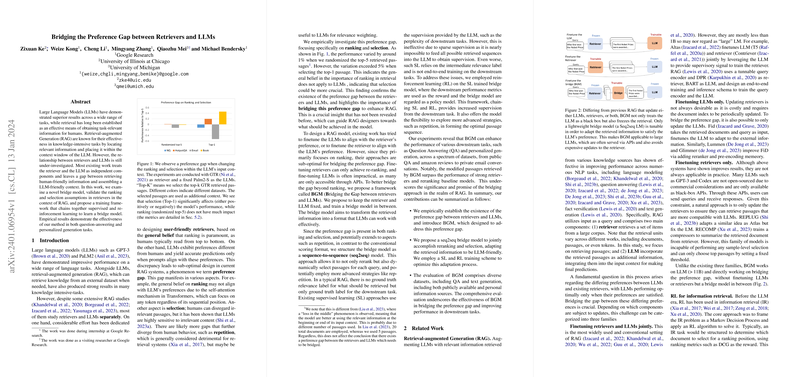Introduction
Innovations in artificial intelligence have led to the development of formidable tools like LLMs and retrieval-augmented generation (RAG) techniques. LLMs, such as GPT-3 and PaLM2, have been breakthroughs in language processing, demonstrating remarkable performance on a multitude of tasks. RAG models enhance LLMs by integrating information retrieved from external datasets, thereby providing more contextually rich responses, particularly in complex tasks that require specific knowledge.
The Preference Gap
Notably, a lesser-discussed issue in the field of AI language processing is what researchers refer to as the 'preference gap' between retrievers and LLMs. This concept pertains to differences in data selection and ranking procedures preferred by users versus what's most effective for LLMs. Traditionally, designers focus on retrieval systems that mimic human reading behaviors, emphasizing the importance of presenting information in a top-to-bottom ranked format. However, LLMs may not align with this approach as their internal mechanics can focus on tokens non-sequentially. More critically, while humans can effortlessly ignore irrelevant content, LLMs can be easily swayed by such distractions, affecting their performance.
The paper in discussion highlights significant performance discrepancies when varying approaches to content selection and arrangement are applied within LLM contexts. This finding challenges the widely held belief regarding the significance of ranked retrieval and instead emphasizes the need for a tailored approach in the RAG system design that can bridge this preference gap.
Bridging the Gap with BGM
To address this preference gap, the paper proposes a framework called BGM (Bridging the Gap between retrievers and LLMs). The essential innovation is the introduction of a 'bridge model' that sits between the retriever and the LLM. This bridge model's purpose is to reformat retrieved information, making it more conducive for the LLM's successful interpretation. This approach has two facets: supervised learning (SL) to constrain the bridge model and reinforcement learning (RL) to optimize policy and improve downstream task performance.
The bridge model is a sequence-to-sequence model, which is trained to not only re-rank but also select the most appropriate passages for the query. This strategy grants the model the dexterity to perform dynamic selection, a capability absent in traditional re-ranking, and surpasses simplistic manual thresholds for passage selection.
Empirical Evidence and Future Work
The experiments conducted validate BGM's efficacy across various tasks such as question-answering and personalized text generation, covering datasets from QA forums to personal emails. The bridge model showed impressive performance compared to strong existing retrievers and ranking-based models, stressing the potential of BGM as a significant enhancement in RAG applications.
This bridge approach opens pathways for future research to consider advancing bridge models that can adapt to varying LLM sizes, datasets, or generalize across different tasks without requiring specialized training.
Conclusion
In summary, the BGM framework presents a novel solution to a nuanced problem, effectively advancing the synergy between human-centered information retrieval methods and the operational preferences of LLMs. By identifying and addressing the preference gap, BGM not only fosters a deeper comprehension of RAG systems but also extends the functionality and efficiency of AI in processing and generating human-like language responses.
